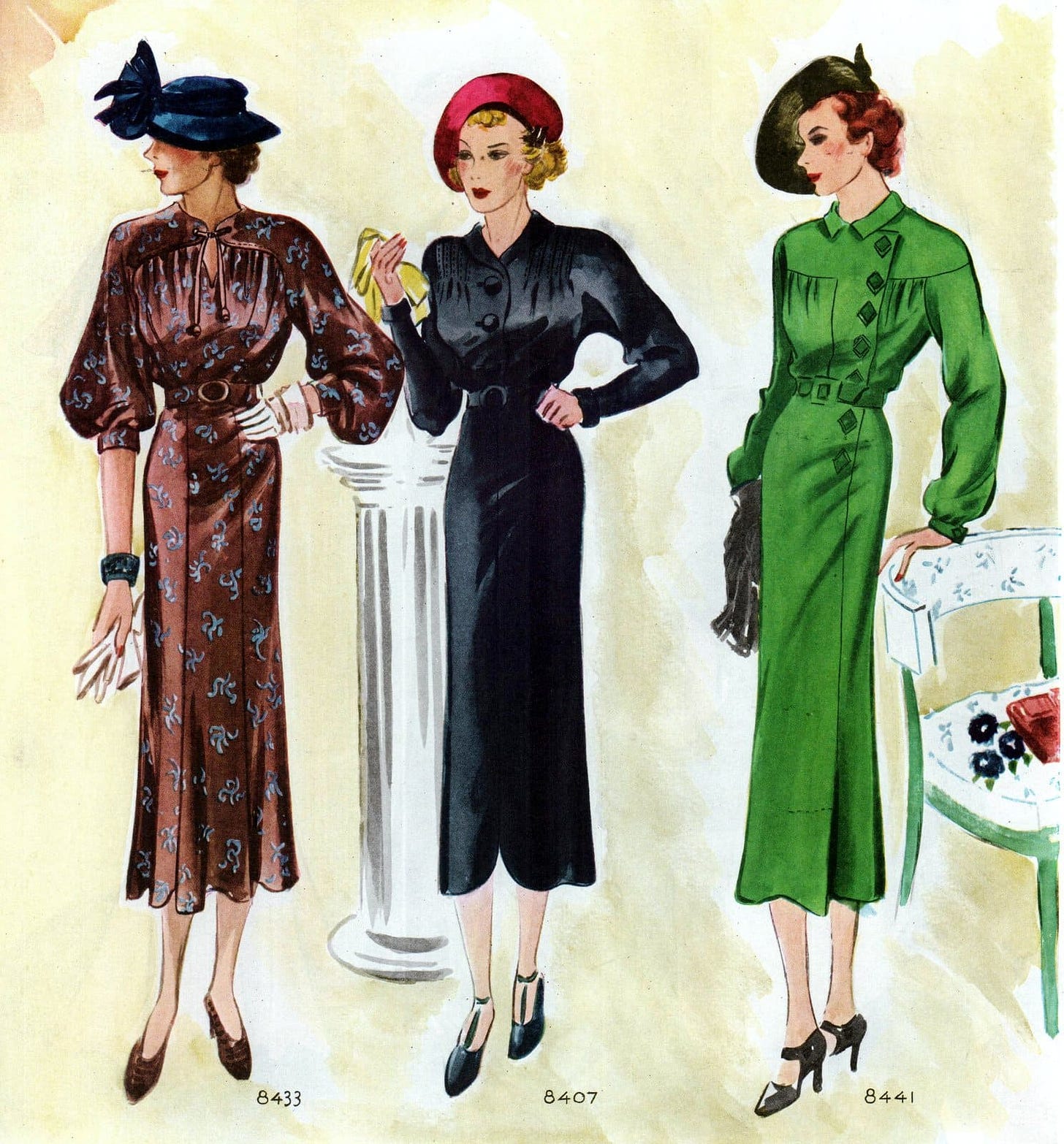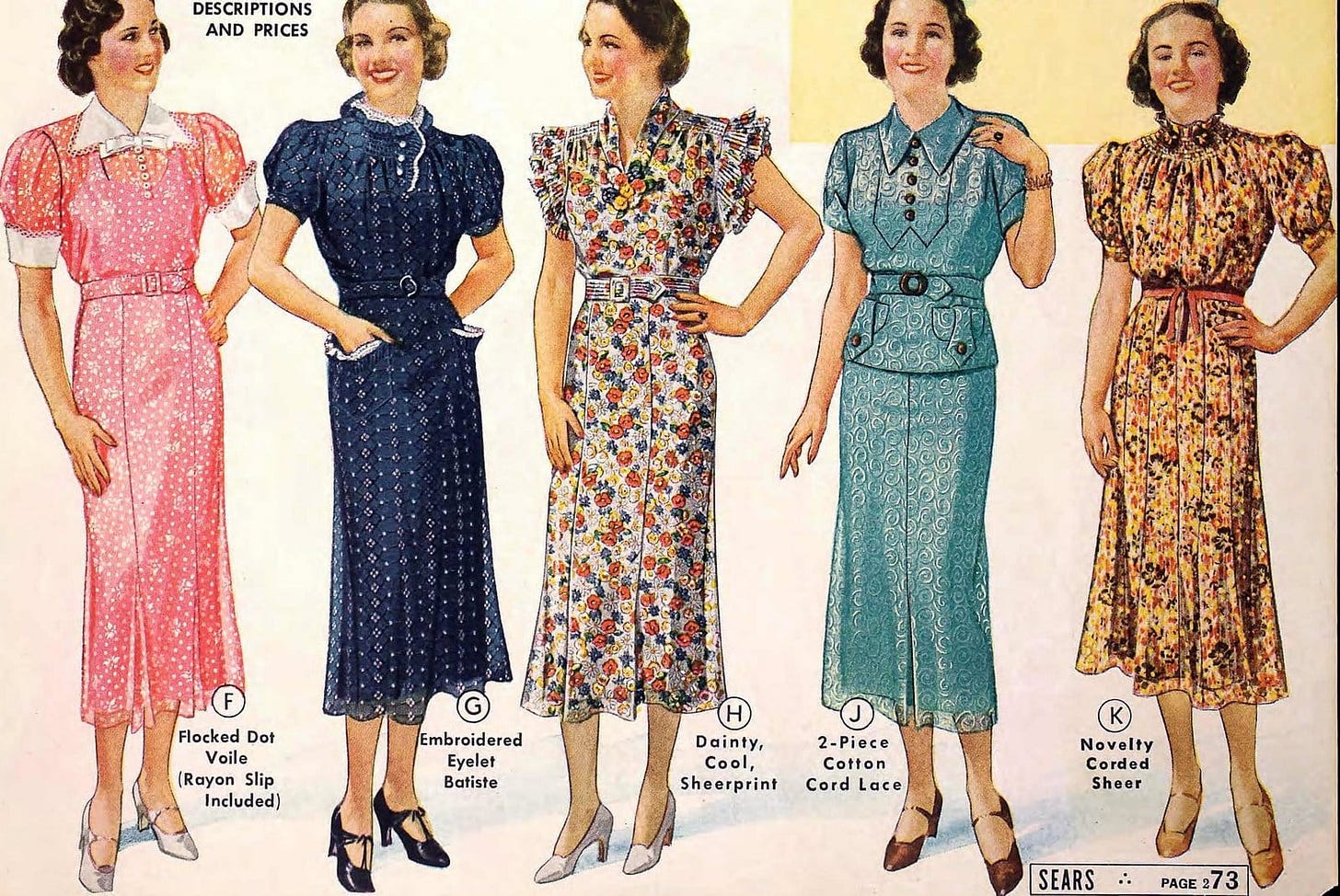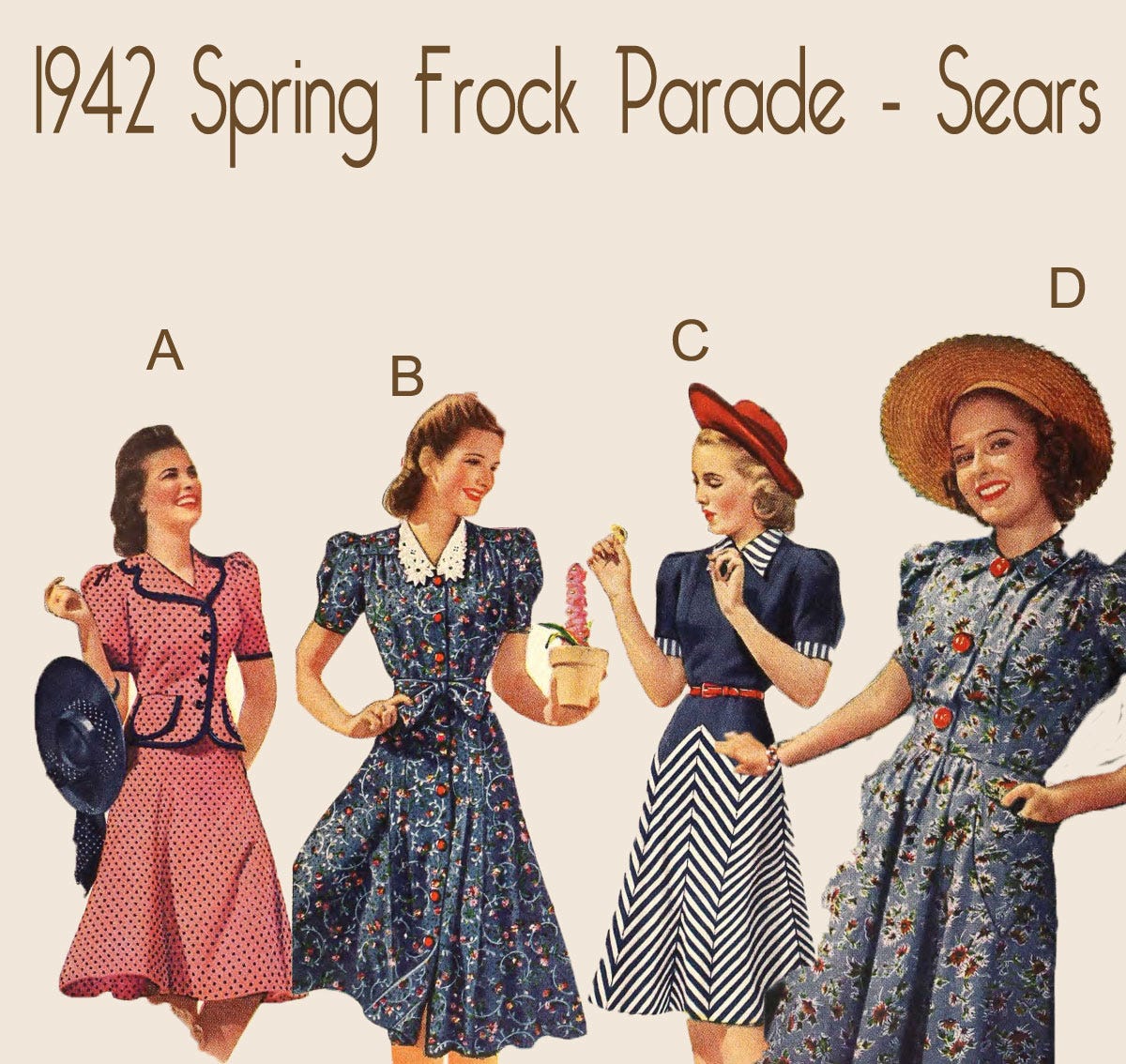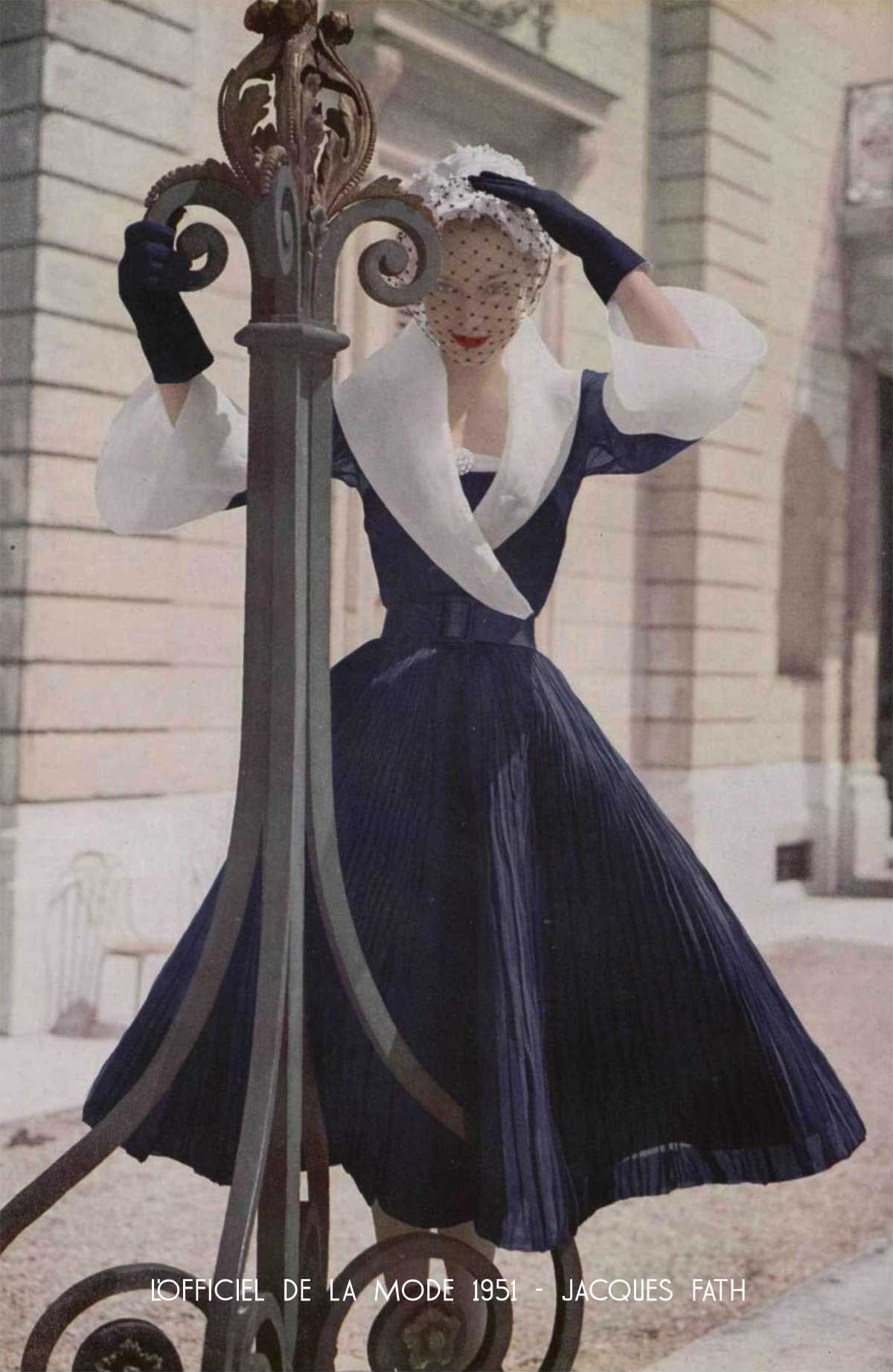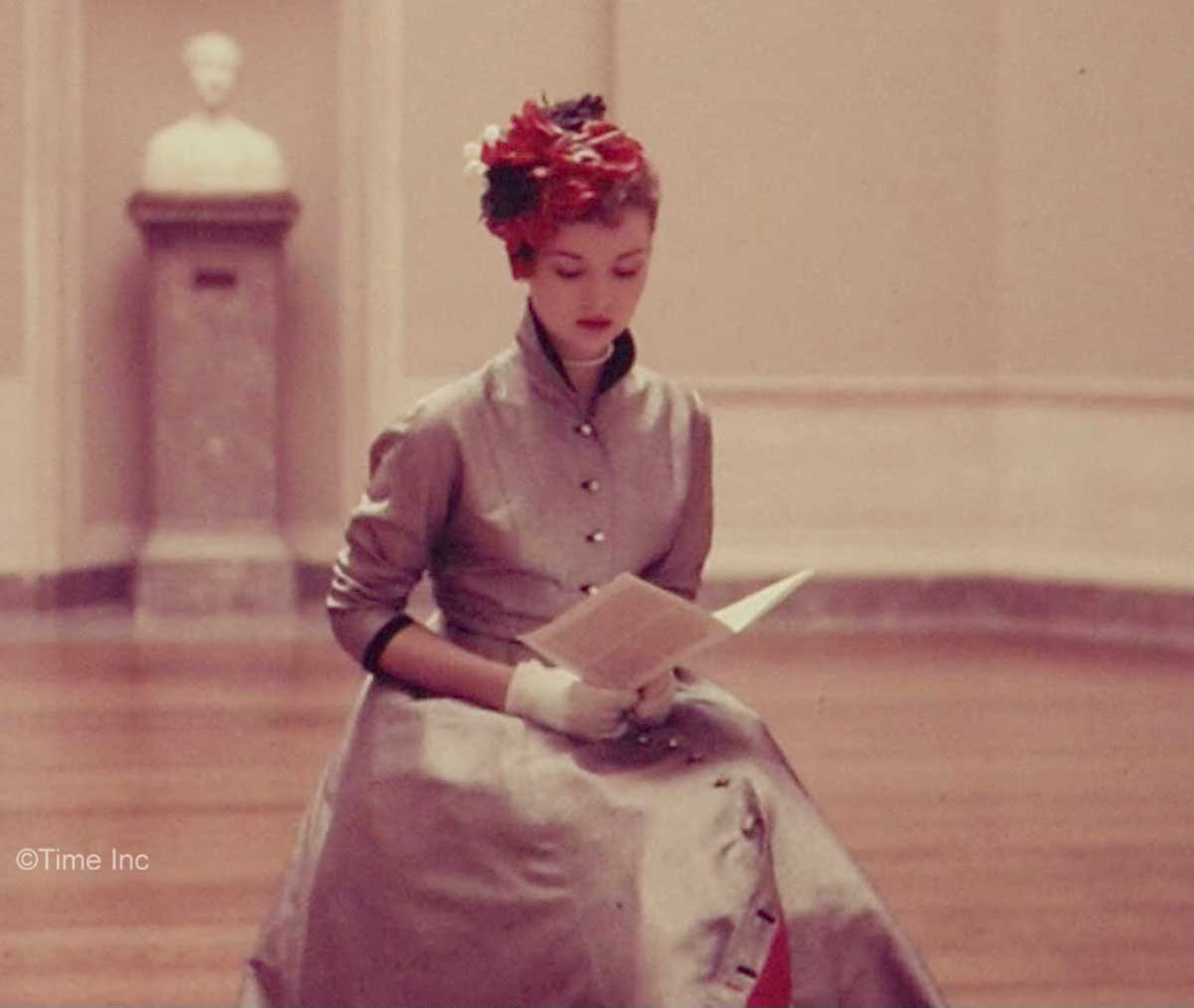From the introduction of Part I, we know the basics of Easter dresses in vintage days: whenever possible, a new spring frock was obtained, perhaps even with new hat, shoes, purse, and other accessories. Such dresses were generally otherwise considered a day dress or afternoon/tea dress, worn with some style of heels.
The 1930’s - the Art Deco Era
The 1920’s silhouette, finally outgrown, was replaced with a feminine cut with closer lines, wider shoulders, and a fitted, normal waistline. The 1930’s is famous for the bias cut, which offered that flattering drape women wanted in their clothing. As the shoulders were considered particularly important, for widening them creates the illusion of an even smaller waistline, puff sleeves and cape sleeves were popular. Necklines remained high and modest, even for a v-neck style, and bodices were usually decorated, while skirts reached the mid-calf. The Art Deco movement lent itself to decorative geometric seams and darts, as well as intricate, and likewise geometric, jewelry.
As you can imagine, the Great Depression did have an effect on fashion, despite the 1930’s being known as one of the most glamorous. Hemlines were shortened to conserve expenses. In another money-saver, "toiles (a muslin or other cheap material pattern of a garment) were allowed in [from France] duty-free. Fashion historian James Laver writes, ‘Each toile was supplied with full directions for making it up, and although the original dress may have cost a hundred thousand francs, it was now possible to sell a simplified version for as little as fifty dollars’."1 This allowed for the most fashion-forward styles to be recreated by many on a tighter budget. Sparkling jewelry was important to every woman, so substitutes for precious materials were found in glass, paste, or flowers.2
“Complete with hat, gloves, heels, and quality stockings, attending church in the 1930s was a formal affair.”3 Tea dresses or one’s best day dress was automatically chosen for church wear, so a new Easter frock would likely have been purchased or hand-sewn in a suitable style.
Colors weren’t as season-specific in this decade, and grew darker over time, though rich in tone. Favorite springtime shades did, however, include “peach, rose pink, lilac, sunny yellow, sky blue, and sea green.”4 Rayon, sheer fabrics, crepes, and shantung were popular fabric choices.5 (Rayon is one of my particular favorites for its breathability and drape, as it’s much more fluid than broadcloth.)
The 1940’s - Wartime
From the Great Depression to wartime rules, women became used to certain wardrobe sacrifices and fabric rationing. As less fabric could be used per item, skirts were cut shorter and narrower, pockets were smaller, and details were minimized compared to the previous decade. Masculine details, perhaps also influenced by the war, were a must in 1940’s fashions.
While we couldn’t find a specification of what a woman might have worn to Mass in the 1940’s, it seems that the wealthier girl might possess a mix of daytime and party dresses, while the married woman of lower classes had nicer rayon dresses and cotton day dresses.6 From this and from looking at the previous decades, our best guess is that, especially with the ongoing war, women would have worn a daytime dress.
Hats and gloves were less widely worn than in previous decades, though they were still often relied upon to bring an outfit together, and hats were always worn to Mass. Easter bonnets were a competition of sorts, with some quite amusing and likely saved for outside the church! Jewelry was often “bold” and were used as “expressions of confidence” while enduring the sufferings of war, separation, and sacrifice.7
Once again, colors were more year-round than seasonal, with primary colors the stars of the show. In 1941, however, spring shades included lime green, topaz gold, open blue, sunset rose, aqua, beige, cadet blue, teal blue (a deep shade), prairie rose, white, navy, and deep purple. Some lighter year-round colors we might choose for Easter these days included shades of green, rose pink, golden yellow, and pastels were common in the summer.
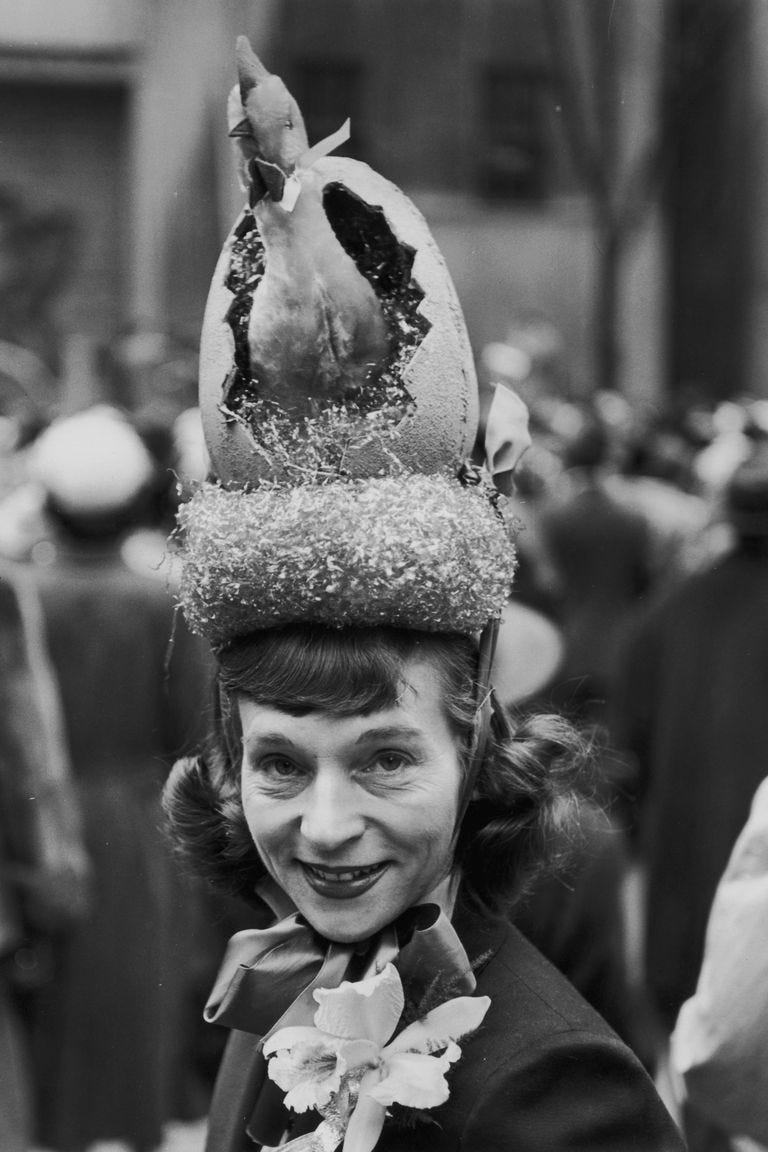
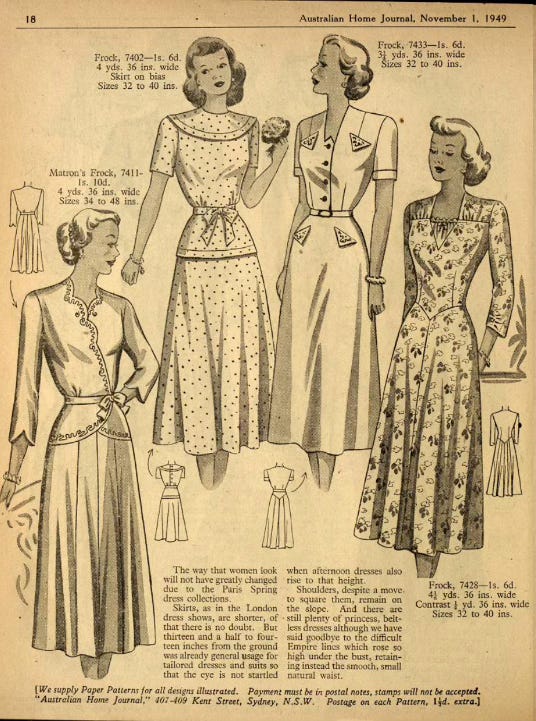
The 1950’s - The Golden Age of Capitalism and Dior’s viral New Look
The advent of Dior’s New Look came in 1947, nearly erasing the ghost of the 1920’s and 1930’s silhouettes, bringing back the hoopskirt silhouette of the 1860’s and replacing the masculine details of the 40’s with ultra-femininity. This is still the decade many associate with vintage femininity, despite its flaws. With the war was over, yardage was generous, with skirts frequently comprised of over three yards alone, not to mention the petticoats underneath.
Hats were always worn outside the home, though the term could apply to any number of styles, including one of our personal favorites, the “whimsy” which was generally more headband like and, as the name suggests, a little whimsical and fairylike. Flowers or a head scarf might also have been worn instead.
The other item a woman never left home without was a pair of gloves. Again, white was the best choice for spring and black for winter, but matching gloves to hats and purses was also popular.8
Pearls were the go-to for jewelry, though you can frequently find 1950’s lucite jewelry on Ebay or Etsy. This was a type of thermoplastic, variations on which include the moonglow, which tends to look as though it’s emitting a soft light. Another innovation which many of us are familiar with today, is the creation of the Aurora Borealis coating for beads and crystals by Swarovski. It was an instant hit with all classes, from haute couture designers and all down the line.9
1950’s spring colors included “light pink, powder blue, cream, aqua, rose, maize (yellow), lilac, and kelly green,”10 though we’ve seen that color photos from the time show many deep blue gowns for the Easter parade.
Once again, we haven’t found specific references to the type of dress commonly worn to Mass, so we’re going to reference known spring fashions, especially tea dresses and afternoon frocks. Gloves were always a must for church attendance, often matching the rest of the accessories worn.
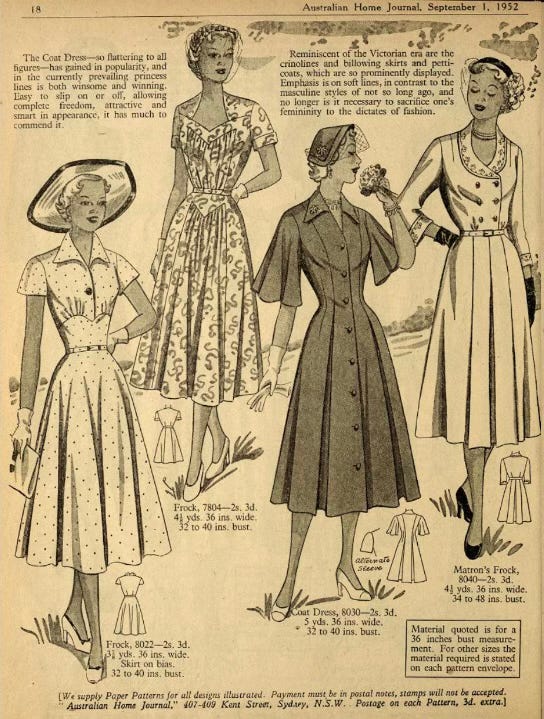
https://fashionhistory.fitnyc.edu/1930-1939/
https://estatesintime.com/2018/03/01/1930s-costume-jewelry/. &. https://vintagedancer.com/1950s/1950s-fashion-women-get-look/
https://vintagedancer.com/1930s/1930s-day-afternoon-dresses/
https://vintagedancer.com/1930s/1930s-fashion-colors-clothing-fabric/
https://vintagedancer.com/1930s/1930s-day-afternoon-dresses/
https://vintagedancer.com/1940s/1940s-capsule-wardrobe-what-clothing-cost/
https://www.windsorjewelers.com/blog/a-look-back-at-1940s-jewelry-trends-styles
https://vintagedancer.com/1950s/1950s-fashion-women-get-look/
https://howtobuyvintagejewelry.com/1950s-jewelry-trends
https://vintagedancer.com/1950s/1950s-fabrics-colors-in-fashion/
Other Sources Referenced:
https://thevintagewomanmagazine.com/1930s-spring-styles/
https://www.buzzfeednews.com/article/gabrielsanchez/these-rare-color-pictures-show-easter-1950s
https://clickamericana.com/topics/featured/1930s-dresses
If you’d like to support Windflower’s Catholic writings, please consider becoming a paid subscriber (officially launching on Easter Monday with dressmaking and even more fantasy fiction!) or making a one-time donation to help continue my work. 10% of all proceeds will be donated to support my church and the weekly Latin Mass, while another 30-40% will go back into Windflower’s projects. Thank you!






